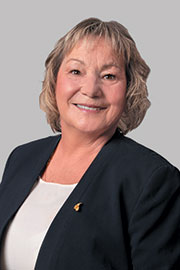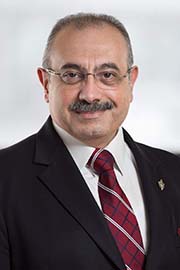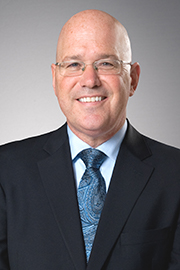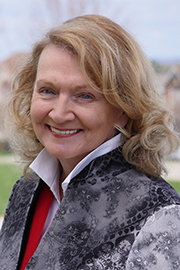- Apr/9/24 12:00:00 p.m.
I’m pleased to welcome member companies from the Ontario Road Builders’ Association and the Ontario Asphalt Pavement Council and their board to Queen’s Park today. The member companies are active throughout the province to keep Ontario competitive by building our transportation infrastructure.
Thank you for being here today and thank you for all your work across the province.
- Hear!
- Rabble!
- Apr/9/24 12:00:00 p.m.
I apologize; at the beginning when we did introductions, I did not welcome the Ontario Provincial Council of the Catholic Women’s League of Canada and welcome the Niagara member. Thank you for coming to your House.
- Hear!
- Rabble!
- Apr/9/24 12:00:00 p.m.
I would like to take the opportunity to welcome St. Aloysius Gonzaga secondary school, who are visiting Queen’s Park from my riding of Erin Mills. Welcome to Queen’s Park.
- Hear!
- Rabble!
- Apr/9/24 12:00:00 p.m.
It’s my pleasure to welcome to the Legislature this afternoon Caroline Tolton from the Vimy Ridge Foundation, as well as Craig Oliver, Shelly Sing, Vic Sing and PJ O’Neill from the Royal Canadian Legion, District D. Welcome to your House.
It is an honour to rise in this House today to mark the 21st Vimy Ridge Day. Recognized annually on April 9, this day commemorates the members of the Canadian Armed Forces who were killed or wounded during the Battle of Vimy Ridge and reminds us of the courage and sacrifice shown by all who have fought to secure our freedoms and our country, whether it was on the slopes of Vimy Ridge, the beaches of Normandy, in Korea, the Middle East, or anywhere in between.
Speaker, 107 years ago today, on a cold and snowy Easter Monday outside the village of Arras in northern France, the four divisions of the Canadian Armed Forces assembled. Fighting together for the first time as one, they faced a formidable task: to dislodge the entrenched and fortified German forces from Vimy Ridge and to secure the crucial high ground for the Allies.
Prior to Canada’s advance in April 1917, the Allies had made numerous attempts to capture the ridge, all of which ended with high casualties and the ridge remaining in German hands. The most notable of these efforts came in the fall of 1915, when both the French and British launched an offensive with the same objective faced by Canada two years later: to dislodge the enemy and secure the ridge for the Allies. This attempt was met with fierce resistance and led to over 150,000 Allied casualties.
Speaker, 100,000 men strong, and armed with meticulous planning, new tactics and lessons learned from the British and French, Canada’s four divisions stood ready to do what had previously proven impossible. At 5:43, as dawn broke, on Monday April 9, 1917, a massive artillery campaign began firing. Heavy artillery hammered German defensive positions while light field guns fired a mere 100 yards in front of advancing soldiers, providing much-needed cover for their advance. Just before 6:30 a.m., three of the four Canadian divisions had secured their first objective, and by mid-afternoon, they had reached their second objective.
On the morning of April 10, fresh reinforcements were brought to the front to assist in the next wave of the attack. After an intense artillery bombardment, Hill 135 and the town of Thélus had been captured, and all that remained by day’s end was the fortified German high point on Hill 145.
After intense fighting on April 11 and into April 12, the Canadians were finally able to dislodge the Germans from their fortifications on Hill 145, brought on by yet another artillery barrage from the British. By sundown on the 12th, Vimy Ridge had been secured for the Allies and would remain in Allied hands until the end of the war. The battle was over. And the impossible had been realized.
Nevertheless, when the dust finally settled, the true cost of Vimy Ridge came to light, with the four divisions suffering over 10,000 casualties, including the 3,600 fatalities and the over 7,000 soldiers who were wounded.
And while the price paid for this victory was great, the importance of Canada’s success at Vimy Ridge cannot be overstated. Not only were they able to do what had previously proved unattainable, but news of this achievement spread up and down the Western Front. And before long, Canadians were viewed by allies and enemies alike as a formidable and independent fighting force. To quote former British Prime Minister Lloyd George, “Whenever the Germans found the Canadian Corps coming into the line, they were prepared for the worst.”
Canada’s story, not unlike the stories of other countries, is made up of moments and events that forever alter the nation’s fabric. While not always obvious at first, upon further reflection, the significance of these points in time becomes increasingly clear.
It can be said and has been said that on the slopes of Vimy Ridge that day, Canada emerged as a nation unto itself and one that was distinct from our British cousins.
In his memoirs on World War I, a brigadier general and member of this Legislative Assembly of Ontario for the riding of Kingston wrote about the Battle of Vimy Ridge, saying, “In those few minutes, I witnessed the birth of a nation.”
As a day of remembrance, Vimy Ridge Day calls on to us to take a moment to pause and reflect on those who made the ultimate sacrifice to secure the ridge all those years ago, and on all who have worn the Maple Leaf and served the cause of freedom. The freedoms we enjoy each and every day have been paid for through the courage, sacrifice and loss shown by brave Canadians from coast to coast to coast. Vimy Ridge Day is a reminder that the act of remembrance is not confined to 11 days in November, but rather is an ongoing and year-round process.
Today, nearly 107 years since the Battle of Vimy Ridge, we no longer have any veterans left who were there and lived through the realities of those days. Nevertheless, we all share in the responsibility to keep their stories and experiences alive and to remind the next generation of their sacrifices.
In February, I was proud to host a Remembrance Day round table alongside the Minister of Education. Together, we were joined by representatives of the Royal Canadian Legion, Historica Canada, the True Patriot Love Foundation and the Vimy Ridge Foundation, as well as members of the Canadian Armed Forces and Cadets Canada—an organization that is very close to my heart, as I was a part of them for a number of years. As a group, we discussed the importance of keeping the essence of Remembrance Day alive, especially for youth and young people, as more and more time passes since these conflicts. We also discussed the need to reframe how remembrance is approached. And while a century has passed since Vimy Ridge, veterans continue to walk among us, having served in Canada’s more recent engagements as peacekeepers in the Congo, Somalia, Rwanda, as well as in the ongoing fight against ISIS and alongside our allies in the war in Afghanistan. We have a shared responsibility to acknowledge the sacrifice and courage by those who are with us, in the same way we do for those who have fought at Vimy Ridge, in World War I and World War II.
As a government, we remain committed to raising awareness and to ensuring Ontario’s young people can engage with this history in a way that reflects Canada’s more recent military history, and is informative, engaging and impresses upon them the significance of moments like the Battle of Vimy Ridge, not just to the war effort, but to a moment that fundamentally impacted Canada’s growth and development into the country we all live in today.
A little over two weeks ago, the House voted to pass the Murray Whetung Community Service Award Act following third reading, and it awaits Her Honour’s royal assent. This new honour and the legacy of Mr. Whetung—one of over 7,000 Indigenous veterans who fought for Canada during the First World War and Second World War. Once established, the award in his honour will recognize an outstanding air, army and sea cadet from each of Ontario’s cadet squadrons who have gone above and beyond for volunteerism and contributions in their community.
In November, my colleague the Minister of Labour, Immigration, Training and Skills Development announced an investment of over $4 million to provide men and women of the Canadian Armed Forces who are transitioning to civilian life with access to skills training and resources to find new, in-demand jobs and careers.
Our government knows that we must continue to educate the next generation on the sacrifices and all that our veterans do, but also that we must empower and support those who have served courageously so that they too may find success and opportunity upon returning to civilian life.
Speaker, in closing, I want to leave this House with a line from Canada’s most famous wartime poem, In Flanders Fields by John McCrae: “To you from failing hands we throw / The torch; be yours to hold it high.”
On Vimy Ridge Day and every day, let us continue to carry the torch forward, to honour the memory and courage of those who fought and died for our freedoms, and to recommit ourselves to keeping the stories and the memories of those who have fought and died for our freedoms alive for the next generation and generations to follow.
Lest we forget.
- Hear!
- Rabble!
- Apr/9/24 12:00:00 p.m.
I beg leave to present a report from the Standing Committee on Social Policy and move its adoption.
- Hear!
- Rabble!
- Apr/9/24 12:00:00 p.m.
Thank you very much.
The next question.
That concludes our question period for this morning.
This House stands in recess until 3 p.m.
The House recessed from 1213 to 1500.
Report adopted.
Report adopted.
MPP Hazell moved first reading of the following bill:
Bill 184, An Act to amend the Metrolinx Act, 2006, the Public Transportation and Highway Improvement Act and the Shortline Railways Act, 1995 with respect to transportation / Projet de loi 184, Loi visant à modifier la Loi de 2006 sur Metrolinx, la Loi sur l’aménagement des voies publiques et des transports en commun et la Loi de 1995 sur les chemins de fer d’intérêt local en ce qui concerne les transports.
First reading agreed to.
- Hear!
- Rabble!

- Apr/9/24 12:00:00 p.m.
Your committee begs to report the following bill, as amended:
Bill 66, An Act to proclaim Heart Valve Disease Awareness Day and Heart Valve Disease Awareness Week / Projet de loi 66, Loi proclamant la Journée de sensibilisation à la cardiopathie valvulaire et la Semaine de sensibilisation à la cardiopathie valvulaire.
Bill 137, An Act to proclaim Planning for Your Silver Years Awareness Week / Projet de loi 137, Loi proclamant la Semaine de sensibilisation à la planification de l’âge d’or.
- Hear!
- Rabble!
- Apr/9/24 12:00:00 p.m.
- Re: Bill 184
This bill amends several acts.
The Metrolinx Act, 2006, is amended to add a new object for Metrolinx requiring it to promote and facilitate the integration of routes, fares and schedules of municipal bike-share systems. Section 29 is amended to require Metrolinx or a subsidiary corporation to ensure that any assets sold or disposed for the purpose of building residential units include at least 20% affordable residential units.
The public transportation and highway maintenance improvement act is amended to specify mandatory maintenance standards for Highways 11, 17 and 69.
The Shortline Railways Act, 1995, is amended to re-enact section 10 of the act, which was repealed by the Getting Ontario Moving Act (Transportation Statute Law Amendment), 2019. The re-enacted section establishes requirements that apply to shortline railway companies that wish to discontinue the operation of a railway line.
- Hear!
- Rabble!
- Apr/9/24 3:10:00 p.m.
Responses?
- Hear!
- Rabble!
- Apr/9/24 3:10:00 p.m.
I rise today to recognize and pay tribute to the brave Canadians who fought valiantly and sacrificed so much during the Battle of Vimy Ridge, a defining moment in our nation’s history.
Speaker, 7,004 Canadians were wounded in the Battle of Vimy Ridge on another continent over a century ago; 3,598 Canadians died. When we take a moment and think of the weight of the sacrifice to Canada, a country, at that time, with just a fraction of our current population, it is staggering. It was a sacrifice that was felt in every corner of our country, as its weighty cost was felt across all communities, within all households.
The price paid by these young Canadians for our freedom was indeed heavy. These were young individuals—some lying about their age. They were not from professional military backgrounds. However, they were our brothers, our fathers, our sons. They were regular people from our streets and from our neighbourhoods. They were called upon to act with duty, to act with courage and to safeguard the homes so many left behind.
The Battle of Vimy Ridge, which occurred between April 9 and April 12, 1917, fought on the already war-scarred landscape of northern France, was a moment that now has become a symbol of Canadian courage in the face of conflict. It is why on April 9 each year, we take a moment to reflect, to take a moment to thank and, most of all, to remember—to remember and to feel the pain of so many.
Speaker, only a few years ago, our nation, our province and our municipalities celebrated the centennial of the Battle of Vimy Ridge.
I recall when Niagara spent nearly 10 years and countless hours of work in preparation for celebrating the 100th anniversary of Vimy Ridge—a piece of Canada’s history that was painstakingly restored in Niagara in order to provide a public viewing. At the Lake Street Armoury in St. Catharines, an unveiling of the Vimy Ridge gun, a German artillery gun captured by Canadian soldiers during the battle of Vimy Ridge—the restoration, spearheaded by the Lincoln and Welland Regiment Foundation, involved countless hours steeped in the efforts of our region, showcasing Niagara’s commitment to the honouring of our past. It is a source of pride to honour the citizens, honour the soldiers and the peacekeepers who served. In Niagara, veterans and community members alike stood shoulder to shoulder in our collective recognition for those important events. This is a story from my community about the efforts to recognize and honour those who made the greatest sacrifice at Vimy Ridge.
Each one of us here in this chamber has similar stories. Each community has made similar efforts. Honouring those who have made the great sacrifice is the greatest unifier.
Today, as we reflect on the significance of Vimy Ridge, let us also celebrate the unity and the resilience that have come to define us as Canadians.
Today, Canadian families with a present military tradition or civilian families—together, we all remember that Vimy Ridge defined our nation. Let us remember the lessons of our past, the bold actions and the pivotal moments that define our nation. Their commitment to peace, democracy and justice is the legacy of Vimy—a legacy we continue today as peacekeepers in our Canadian military.
As we honour the memories of those who fought and fell at Vimy Ridge, let us renew our pledge to one another. The imprint that the battle had on Canadian families continues to ripple through all of our communities even today, almost 107 years later.
In closing, as we take a few moments of silence, when you bow your head, try to say, “We will remember them,” but try to feel the fear, the brotherhood and the unity of our heroes, our Canadian military. Let us acknowledge how fortunate we are, as Canadians—for the breadth of the sacrifices of real lives at Vimy Ridge and the high price that was sacrificed. Let us pay gratitude to those who have since paid the ultimate sacrifice, to those who have served our military, and to all who continue to do so today.
As we look forward to the future, let us embrace the legacy of courage and honour, recognizing that Vimy’s legacy is one of peace, solidarity and prosperity.
Lest we forget.
- Hear!
- Rabble!
- Apr/9/24 3:20:00 p.m.
Speaker, it’s both an honour and a privilege to speak on Vimy Ridge Day. The bravery and incredible accomplishment of Canadians at Vimy Ridge has certainly earned international recognition for good reason. But I believe there’s another key feature of the Battle of Vimy Ridge that makes it speak so strongly to those of us here at home: Vimy Ridge lives on in the memories of Canadians still, not just as a commemoration, but as a shining example of courage, perseverance and the Canadian spirit of teamwork and innovation.
In the horrors of World War I, the Canadian Corps knew that continuing to sacrifice thousands upon thousands of lives was not acceptable. There had to be another way, and indeed they created one. The four divisions of the Canadian Corps employed innovative tactics and techniques. Through detailed reconnaissance, map study and rehearsals, Canadian troops familiarized themselves with the terrain. Commanders gave the everyday soldiers new orders, encouraging them to take the initiative, and then gave them the support and information needed to do exactly that.
The meticulous planning and preparation undertaken by Canadian officers and soldiers together, prior to the battle, was crucial to its success. The Canadian Corps at Vimy Ridge pushed the Central Powers back almost five kilometres, the greatest single Allied advance on the Western Front to that date. Still, Vimy cost almost 3,600 Canadian lives and untold injuries, but that was far fewer than the 150,000 Allied lives that had already been lost trying to capture Vimy.
That spirit of innovation, finding a new way in a dark time, lives on in Canadians today. It’s a blessing that we live with the freedom to do so—a freedom provided by the sacrifices of Canadians of the past. Their memory inspires us to be a strong, innovative, caring nation, standing together in the face of all that challenges us. We must always give thanks, and we must never forget the gifts that we have been given through their sacrifice.
Applause.
- Hear!
- Rabble!
- Apr/9/24 3:20:00 p.m.
I’m quite happy to present this petition. Marc Carroll, a disability rights activist from Sudbury, has collected over 200 names. Marc lives with a disability, and he feels that our society will need more supportive housing in order to be able to accommodate people who have disabilities, so he took it upon himself to write a petition and to go around and ask people to sign it. He’s asking us to make sure that the supportive housing sector in Ontario gets the funds they need so that we have enough supportive housing to meet the 2.6 million Ontarians who live with disabilities, who would benefit. I agree with him.
I will ask Duncan to bring those petitions to the Clerk.
- Hear!
- Rabble!
- Apr/9/24 3:20:00 p.m.
Of course, once again, I would like to thank Dr. Sally Palmer for the thousands of signatures that she has been able to collect on behalf of people who are on social assistance in this province.
As we know, people who are on social assistance are living in legislated poverty. On Ontario Works, they’re at $733 a month; for ODSP, they’re at $1,308 a month. The meagre increases that have been put on by this government are not near enough to ensure that people have the ability to live full, healthy lives. That’s why the people who have signed this petition and the thousands before that are asking the government to double the social assistance rates. I think it’s the right thing to do, and hopefully the government will also see fit to ensuring that happens.
- Hear!
- Rabble!
- Apr/9/24 3:30:00 p.m.
I have a petition here that comes from Ostomy Canada Society. Basically, the Assistive Devices Program in Ontario should cover 75% of the cost of assistive devices. For people who wear an ostomy—believe me, nobody wears an ostomy if they don’t have to—the amount that they get has not been changed in many, many years, which means that right now, they get about $850 a year max, when most of them spend over $2,000 for their ostomy supplies. They would like us, as legislators, to make sure that the Assistive Devices Program is true to itself so that they get reimbursed 75% of the true cost of having to live with an ostomy and buying the ostomy supplies.
I think this is reasonable. I fully support their ask and will ask Duncan to bring that to the Clerks.
We know that the vaping industry really targets the kids. They target the kids with the flavours that they use. They target the kids with the way that they sell their products.
Mr. Taschereau is very worried. He knows that there are a number of public health agencies, such as public health Canada and Physicians for a Smoke-Free Canada, that are encouraging schools and others to do everything we can to keep vaping out of the hands of children. I think this is wise.
I would ask the House to consider passing my bill, the Vaping is not for Kids Act.
I support what the petition is trying to do. I will ask Nate to bring it to the Clerk.
Je crois que c’est une bonne idée. Je vais signer la pétition, et je demande à Nate de l’amener à la table des greffiers.
A lot of women have signed this petition. Because of intimate partner violence that is rampant in some areas of French River, they need the OPP stations to stay open.
I fully agree with them.
I will sign the petition and ask my good page Nate to bring it to the Clerk.
- Hear!
- Rabble!
- Apr/9/24 3:30:00 p.m.
J’aimerais remercier Kieran Murphy, un élève au Collège catholique Franco-Ouest, et aussi tous les élèves et tous les enseignants au Collège catholique Franco-Ouest.
I’d like to thank Kieran Murphy, a student at Collège catholique Franco-Ouest, who collected all these signatures from students and teachers on a petition which addresses the Student Nutrition Program and the First Nations Student Nutrition Program—
- Hear!
- Rabble!
- Apr/9/24 3:30:00 p.m.
Point of order.
- Hear!
- Rabble!
- Apr/9/24 3:30:00 p.m.
Our understanding is that the standing orders—we oppose this specific change, by the way. It is our understanding that the standing order was meant to summarize the petition, not to change the subject matter of the petition and to make sure it was within a certain time. There was no time limit specified—but that it not be repetitive. I would submit that this is our first day at this. I think we have followed the intent of the standing order change.
- Hear!
- Rabble!
- Apr/9/24 3:30:00 p.m.
The Minister of the Environment, Conservation and Parks.
Are there any other contributions to the point of order that has been raised?
I would point out that, indeed, the standing orders were changed. Standing order 42(b) indicates that, “A member may present a petition in the House during the afternoon routine ‘petitions.’ The member may make a brief statement summarizing the contents of the petition and indicating the number of signatures attached thereto,” but shall not read the text of the petition.
I would say that of the members who have presented petitions this afternoon, not one of them has read the text of the petition, as far as I can tell, based on what I’ve heard.
The issue is, is the submission brief or not?
I would ask the members to keep their introduction of their petitions or their presentation as brief as possible.
Petitions? The member for Ottawa West–Nepean.
- Hear!
- Rabble!
- Apr/9/24 3:30:00 p.m.
These are a continuation of the petitions that the member from Waterloo brought in on behalf of the Roth family. The Roth family, following the death of their daughter, Kaitlyn—there were some flaws in mental health. And so, the intent of these petitions—because we’re not allowed to read them anymore, I’ll summarize them. Because of the number of people who die by suicide and because of the mental health concerns when discharging patients, and the intake policies, what they’re looking for here—and there are many petitions here, Speaker; if you remember, yesterday the member had a huge stack of them. These are just the handful that I had left over. What they’re petitioning for is that the Associate Minister of Mental Health and Addictions earmark funding for training to ensure that something like this doesn’t happen again in the future.
I’ll provide it to page Lyra for the table.
The essence of the summary of it, basically, would be that labour disputes are less long, less hostile and dangerous to communities when you have anti-scab legislation. Obviously, they’re not asking for no worker to be able to go in—because in workplaces like mine, you would need to do care and control of places. But they want to be able to have the withdrawal of labour, which is the only power workers have, as a right so that they can force negotiations to move forward more efficiently.
I obviously support this petition. I’ll affix my signature and provide it to page Simon, who snuck up on me like a ninja.
- Hear!
- Rabble!
- Apr/9/24 3:40:00 p.m.
That concludes our petitions for this afternoon.
- Hear!
- Rabble!














